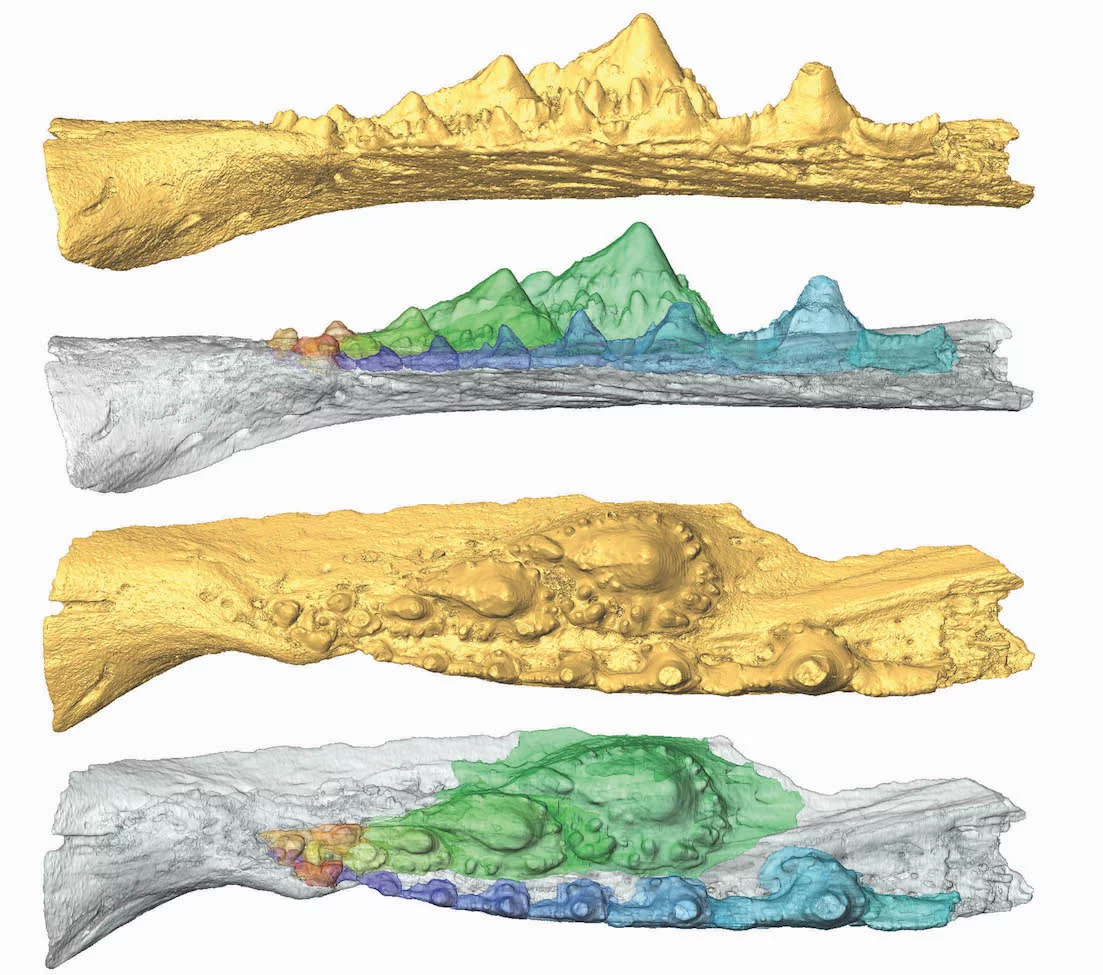Dentitions in living sharks are conventionally interpreted to reflect the ancestral condition for vertebrate tooth development and inference of its evolution. The interpretation in this light of the dental evolution in bony fishes has though proven unsuccessful.
An international team of researchers from the Naturalis Biodiversity Center in Leiden and the University of Bristol characterised by synchrotron based X-ray tomographic microscopy at TOMCAT the tooth and jaw structure of exceptionally-preserved material from 415 million-year old rocks from the Prince of Wales Island in the Arctic Canada. This analysis of shark ancestor fossil jaws shows multiple tooth rows, as opposed to tooth whorls present in modern sharks, revealing that the dentitions of living shark relatives are entirely unrepresentative of the last shared ancestor of jawed vertebrates. Building upon this discovery and using state of the art probabilistic ancestral state estimation methods, this work also shows that while teeth evolved once, complex dentitions have been gained and lost many times in the evolutionary history of jawed vertebrates.
The results of this study have just been published in a new article in Nature Ecology & Evolution on May 6, 2021.
Original Publication
Acanthodian dental development and the origin of gnathostome dentitions
M. Rücklin, B. King, J.A. Cunningham, Z. Johanson, F. Marone, P.C.J. Donoghue
Nature Ecology & Evolution (2021).
DOI: 10.1038/s41559-021-01458-4
Press release
The University of Bristol Press Office has published a press release about this study.
Contact
Dr. Federica Marone
Beamline Scientist, Swiss Light Source
Paul Scherrer Institut
Telephone: +41 56 310 5318
E-mail: federica.marone@psi.ch
